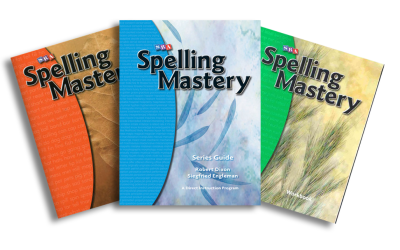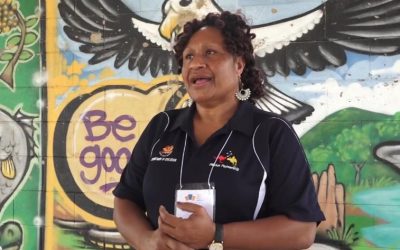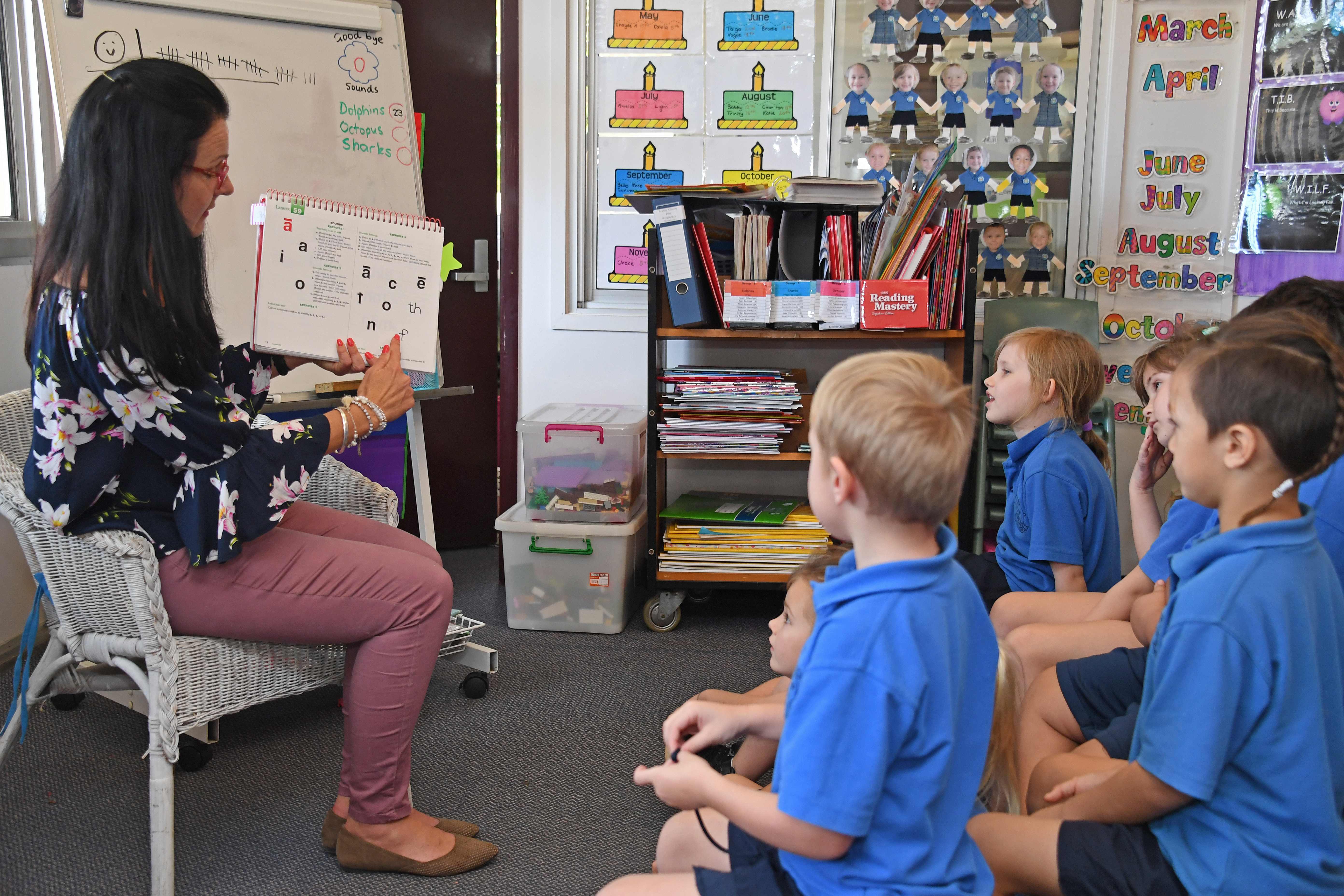This article distils the 10 essential classroom management skills every teacher needs to possess into a concise guide. From consistent discipline and effective communication to flexibility and student engagement, these tips collectively offer a roadmap for educators to enhance classroom management, ultimately leading to improved educational outcomes.
1. Set clear expectations
Why are clear expectations on the list of 10 essential classroom management skills?
Clear expectations in a classroom set the tone for both behaviour and academic performance. They serve as a crucial framework that guides teaching and learning activities. By defining what is expected, teachers provide a roadmap for students, outlining how they should act and what academic goals they should strive for.
Establishing and communicating these expectations from the beginning of the school year is pivotal, as is reinforcing them on a regular basis. Clear expectations help students understand not just what they are learning, but also how their learning will be assessed. This clarity fosters a sense of autonomy and accountability in students.
Examples of clear expectations in the classroom
Behavioural/social expectations:
Be kind and respectful to peers and teachers: This creates a positive and collaborative classroom atmosphere.
Raise hands to speak and stay focused during class: Encourages orderly participation and attention to lessons.
Academic performance expectations:
Be on time: This instils a sense of responsibility and respect for class schedules.
Take part in class discussions: Encourages engagement and deeper understanding of topics.
Practical steps for establishment and reinforcement
- Co-construction:
Engage students in developing clarity: Activities like silent protocol, error analysis, and evaluating examplescan be highly effective. This involvement not only clarifies the expectations but also helps students understand the learning process and align their efforts accordingly.
Use visual aids: Use posters, charts, and other visual tools to keep these expectations in constant view. This serves as a continuous reminder for students.
- Leading by example:
Demonstrate the expected behaviours: Teachers should embody the behaviours and attitudes they expect from their students. Your consistency in actions and words reinforces the standards you set in the classroom.
Establish and adhere to consistent routines: Consistent routines align with your expectations and provide students with a structure and a sense of security.
2. Communicate effectively
Why is effective communication a top 10 essential skill for classroom management?
Effective communication is a cornerstone of successful teaching. It’s our primary tool for collaboration and working towards a common educational goal. Furthermore, effective communication provides verbal confirmation that teaching methods are resonating with students, thereby enhancing the overall learning experience.
Examples of effective communication in the classroom
Active listening: This involves listening attentively to students, confirming understanding, and responding thoughtfully. It not only models good listening skills for students but also helps in addressing misunderstandings and extending learning opportunities.
Constructive feedback: While positive feedback should be specific and genuine to boost confidence and engagement, negative feedback must be delivered constructively. This approach helps students improve without feeling demoralised.
Open dialogue: Encouraging students to participate in discussions, ask questions, and express concerns leads to a more interactive and engaging classroom environment. This open dialogue fosters a learning culture where students feel valued and heard.
Visual aids and clear language: Use visual aids and diagrams to express complex topics. Utilise clear and concise language tailored to the understanding levels of students to ensure that communication is effective and comprehensible to all students, regardless of their learning pace or style.
3. Build positive relationships
Why is building positive relationships important for classroom management?
Building positive relationships is one of the top 10 essential classroom management skills. Strong student-teacher relationships enable teachers to better understand student needs and intervene effectively. These relationships are the bedrock of a supportive educational atmosphere where every student feels valued and understood.
Strategies for building trust and rapport
Learn students’ names: Learning and using students’ names is a simple yet powerful act. It shows respect and interest in them as individuals, making each student feel recognised and important.
Acknowledge student efforts: Acknowledging the efforts of students, especially when they struggle, is crucial. It reinforces their belief in their ability to succeed and shows that you, as their teacher, notice and value their hard work. This supportive response can significantly boost student morale and motivation.
Celebrate achievements: Celebrating student successes, big or small, is essential in building rapport and trust. It demonstrates to students that their progress is noticed and valued. Such recognition not only enhances self-esteem but also motivates students to strive for continuous improvement.
One-on-one conversations: These personal interactions can lead to breakthroughs in understanding student behaviour and academic needs. One-on-one conversations offer a unique opportunity to connect with students on a more personal level, enhancing the teacher-student relationship.
4. Maintain consistent and fair discipline
Why is maintaining consistent and fair discipline in the top 10 essential classroom management skills?
Maintaining consistent and fair discipline ensures that all students are treated equally and that the rules are universally applicable. This fosters a sense of justice and predictability.
Strategies for maintaining classroom discipline
Enforcing rules equally: It is crucial to apply classroom rules consistently among all students. Any perception of bias or unequal treatment can lead to feelings of unfairness and resentment. This means objectively evaluating each student’s actions and addressing misconduct in a uniform manner. Doing so establishes a standard of behaviour that is predictable and fair for all students.
Encouraging self-accountability: Encouraging students to take responsibility for their actions is a vital aspect of discipline. Regular progress check-ins, emphasising goal-setting, and reflecting on personal growth can help cultivate a sense of self-accountability among students. This approach not only reinforces discipline but also promotes self-regulation and intrinsic motivation.
Consistent assessment practices: Construct assessments that measure learning outcomes fairly and use objective criteria for grading. Implementing clearly outlined grading guidelines and rubrics can aid students in understanding how their academic performance is assessed. This transparency in assessment practices reinforces fairness and consistency in academic evaluations.
5. Be organised
Why is being organised an essential classroom management skill?
Being organised in the classroom is crucial for several reasons. It provides a routine and structure to day-to-day activities, creating an environment that is conducive to learning. It also helps maintain a focused and calm atmosphere.
A well-structured classroom with established routines offers predictability. This is especially beneficial for students with anxiety and ADHD. Predictability sets clear expectations for students, helping them to know what to expect next and feel more secure in the learning environment.
Furthermore, organised classrooms promote the efficient use of time and resources. When everything has a designated place, both teachers and students can find what they need quickly and easily. This efficiency makes teaching and learning more effective.
Organising physical space and materials
Use bins and labels: Organising items into labelled bins can significantly reduce the stress of locating materials. It ensures that everything has a specific place, contributing to a more orderly classroom environment.
Declutter regularly: Regular decluttering helps keep the classroom tidy and makes it more inviting and conducive to learning.
Use a strategic classroom layout: Arrange furniture to promote both collaboration and independent practice. This includes setting up learning centres that are clear and ensuring resources are easily accessible.
Organising class schedules
Set clear expectations: Sharing and reviewing classroom expectations often with students helps them stay on track. Consistency in what is expected each day provides a framework for students to follow.
Plan ahead: Planning lessons a week in advance can prevent last-minute scrambles. This preparation ensures a smoother flow of the class schedule and reduces stress for both the teacher and students.
Establish a routine: Creating a routine for everyday activities like lining up, bathroom breaks, and transitions between activities can greatly reduce chaos and confusion. This helps in maintaining a calm and orderly classroom.
6. Conflict resolution
What makes conflict resolution a top 10 essential classroom management skill?
Conflict is an inevitable part of any group dynamic, including classrooms. Teachers must be equipped to identify, address, and constructively resolve conflicts, while also modelling these skills for their students. Effective conflict resolution promotes a positive learning environment and teaches students valuable interpersonal skills.
Conflicts can arise from misunderstandings, miscommunication, or differing viewpoints. As a teacher, it’s crucial to demonstrate conflict resolution skills through your actions. This involves showing empathy, actively listening, and facilitating problem-solving discussions among students.
Tools for conflict resolution in the classroom
Brainstorming solutions together: After understanding each party’s perspective, encourage students to brainstorm solutions collaboratively. This method promotes compromise and empowers students to take an active role in resolving their disputes.
Role playing and empathy: Use role-playing activities to help students understand different perspectives. This strategy can foster empathy and provide insights into the conflict’s origins, aiding in finding effective solutions.
Writing as reflection: Having students involved in conflicts write about the incident can serve as a cooling-off period and encourage reflection. Prompt them to express how the conflict made them feel and to think of alternative actions they could have taken. This approach is particularly useful in helping students process their emotions and learn from the experience.
7. Engage your students
Why is student engagement important for classroom management?
Engaged students are more likely to absorb and retain information, participate actively in their learning process, and develop a lifelong love for learning. Engagement can also lead to better classroom behaviour, as students who are interested and involved are less likely to cause disruptions.
Strategies for engaging students in the classroom
Make learning relevant: Connecting lesson content to real-world scenarios or to the interests of the students can significantly increase engagement. When students see the relevance of what they are learning to their lives, they are more motivated to pay attention and participate.
Incorporate interactive methods: Utilising interactive teaching methods such as group discussions, hands-on activities, or technology-based tools relying on mixed media can make learning more dynamic and engaging by encouraging active participation rather than passive listening.
Encourage student autonomy: Giving students some control over their learning process can greatly enhance engagement. This can be achieved through choice-based assignments, project-based learning, or inquiry-based activities where students have more freedom to explore topics of their own interest.
8. Be flexible and adaptable
Why are flexibility and adaptability in the list of 10 essential classroom management skills?
In the dynamic environment of a classroom, flexibility and adaptability are essential qualities for any teacher. Lessons rarely go exactly according to plan. Unexpected disruptions, varying student needs, and a myriad of other unforeseen circumstances require teachers to be able to adjust quickly and effectively.
Unexpected events, from fire alarms to teacher absences, can disrupt even the best-laid plans. Being flexible allows you to swiftly adapt your plans to changing circumstances while maintaining the flow of learning.
Each classroom is a melting pot of diverse learning needs. Adaptability enables teachers to make necessary accommodations or modifications to cater to these different needs, ensuring all students stay engaged and motivated.
Strategies for adapting lesson plans and teaching styles
Flexible/Alternate аssessment: Using a variety of assessment methods can cater to the diverse learning styles and needs of your students, including students with special learning needs. This could include oral presentations, project-based assessments, or creative writing assignments, in addition to traditional tests and quizzes.
Incorporating student feedback: Regularly soliciting and incorporating student feedback via regular check-ins and surveys is a valuable strategy. It not only helps in adapting your approach to meet their needs, but also fosters a collaborative learning environment where students feel their opinions are valued.
Balance structure and independence: Adapt your teaching style according to the developmental stage and abilities of your students. Younger students might require a more structured approach with clear guidance, while older students may benefit from greater independence. This fosters a sense of ownership in their learning process and prepares them better for future academic and life challenges.
9. Seek continuous professional development
Why is continuous professional development an essential classroom management skill?
CPD helps educators stay current with the latest educational trends and strategies, particularly in classroom management. It also fosters a culture of reflection and self-evaluation, allowing teachers to continually refine and improve their own teaching approaches.
Strategies for continuous professional development
Reflection and self-evaluation: Reflecting on classroom interactions, student feedback, and lesson outcomes helps teachers identify areas for improvement and adapt their methods accordingly.
Setting personal development goals: Teachers should set specific, achievable goals for their professional growth. These might include enhancing certain classroom management skills, adopting new teaching strategies, or exploring innovative educational technologies.
Peer mentoring and coaching: This form of support is particularly beneficial in the early stages of a teaching career, helping new educators develop robust classroom management skills and navigate the complexities of the teaching profession.
Online learning platforms: The rise of digital platforms has opened up access to professional development to a global audience. Online courses and webinars offer a convenient way to learn about different teaching methods and classroom management techniques, often allowing teachers to learn at their own pace.
10. Foster an inclusive learning environment
Why is fostering inclusivity a top 10 essential classroom management skill?
Creating an inclusive learning environment is vital in today’s diverse educational landscape. It transforms the classroom into a space where diversity is not just accepted, but embraced. This approach models an inclusive mindset, encouraging students to carry these values beyond the classroom into their wider communities.
Strategies for fostering an inclusive learning environment
Encourage collaboration: Group activities can foster a sense of community and collaboration. This approach encourages students to work together, appreciate each other’s strengths, and support one another’s learning.
Facilitate inclusive dialogue: Encourage open dialogue and active listening in the classroom. This involves creating opportunities for students to express themselves and share their experiences and perspectives in a safe and supportive environment, and establishing ground rules for how to do this.
Eliminate barriers: Work actively to remove any barriers that hinder learning. For students with disabilities, this means making any necessary accommodations or modifications to the instructional material to ensure they have equal access to educational opportunities.



